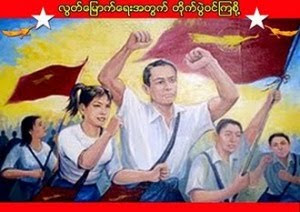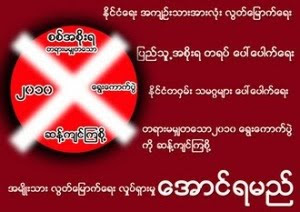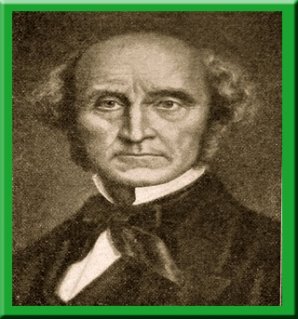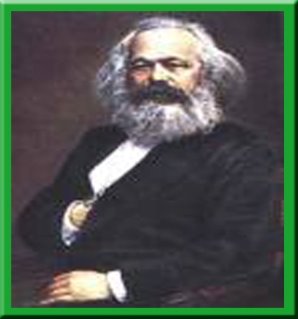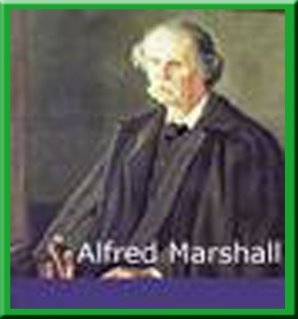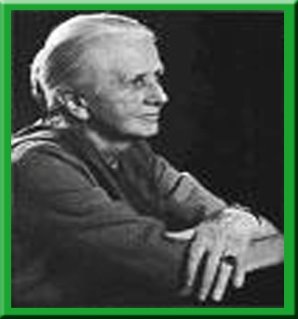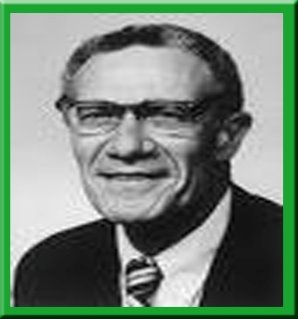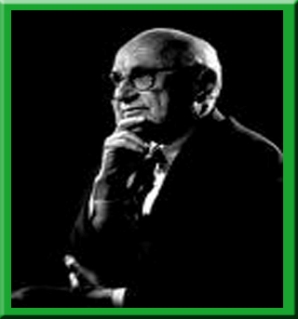Introduction
The persistent rise of political violence is a very disturbing trend against peace and prosperity in different parts of the world. For historians and anthropologists, political violence is seen as related to movements of social protests against established powers. For political scientists, political violence is seen as related to the often violent response of the state to challenges of social protests. For economists, political violence is seen as related to failures of the state to maintain the monopoly of coercion and force by the state Despite of their different views, there has been a long history of political violence in the world along with the increasing trend of the number of victims, the magnitude of devastation and the new technologies of destruction. With the proliferation of political violence, the problems of violence underpins modern understandings in politics. Violence has been seen as the essence of politics by some political scientists and philosophers. On the other hand, some scholars keep the two clearly apart and set politics up as antithetical to violence. In this essay, I would like to analyse whether violence is an important instrument in politics by exploring the works of political theorists and analysing case studies in a modern world.
Traditional Thinking on Politics and Violence
In his writings of 'Leviathan', Thomas Hobbes depicted the pre-political 'state of nature' as a place of violence, where endeavours to destroy or subdue one another, making life solitary, short and nasty. He clearly demonstrates the relationship between violence and political power by arguing that the power of the artificial body that can satisfactorily achieve this domination must be centred on the power of the sword .
Max Weber also claimed a monopoly over the legitimate use of violence. According to his theory, political action is the domination of the territory by using violence as a legitimate means. He clearly states the relationship between violence and political organizations by arguing as “In addition to the fact that violence is (at least also) used to guarantee 'order', a distinguishing feature of the political group is that it claims power over its administrative staff and its rule in a particular area and guarantees it by force […] in this respect they must be regarded as political organizations .”
By taking the steps of Hobbes and Weber, numerous political theorists and thinkers look at politics from the view point of state organizations. On the other hand, some thinkers also focus on revolutionary violence by looking at politics from the view point of the oppressed people. In the doctrine of Marxism, the violence of the political economic domination and exploitation of the working class by the capitalist state must and will be resisted and eventually overthrown by concerted, and violent, action by the revolutionary working class.
Fanon's Theory
Fanon asserts a new liberationist form of politics that is free of violence by attacking the liberal parliamentary form of party politics that purports to eschew violence, but cannot. He also attacks the realist account, which associates politics with violent domination, and argues for the justification of violent resistance. Although his ideas were profoundly influenced by Karl Marx, Fanon departs most sharply from Marx in his understanding of the functions of violence in the revolutionary process.
For Marx, violence was not the key factor in his analysis of revolution. He expects violence to be a part of the revolutionary process, however, he doesn't consider it as historically necessary. Unlike Marx, Fanon argued that violence was indispensable in the decolonization process, a categorical imperative, without which one could not talk of revolution - or at least one could only talk of it.
In his essay titled “Toward the Liberation of Africa,” he states: “Violence alone, committed by the people, violence organized and educated by its leaders, makes it possible for the masses to understand social truths and gives the key to them. Without that struggle, without that knowledge of the practice of action, there is nothing save a minimum of re-adaptation, a few reforms, at the top, a flag waving: and down there at the bottom an undivided masses still living in the middle ages, endlessly marking time” . He clearly implies that violence is inevitable and suggests that violence is the only way 'the wretched of the earth '; political and economic structures of exploitation and oppression are embodied in rage and resentment, and finally in pathologies of body and mind; can be free. To the contrary, Arendt sees the fundamental assumptions of Fanon's theories of politics and revolutionary change as mistaken.
Arendt's Theory
Arendt looks the relationship between violence and politics by taking alternative views. She thinks the arguments of 'violence as the ultimate power' in Hobbes to Weber's accounts, 'war as politics continued by other means in Clausewitz's account and power as growing out of the barrel of a gun in Mao's account are based on a fundamental confusion between political action and fabrication.
For Arendt, unlike fabrication, action does not encompass bringing an envisaged product into being and violence is only ruled by means-end reasoning. She writes that “The end of human action, as distinct from the end products of fabrication, can never be reliably predicted. The means used to achieve political goals are more often than not of greater relevance to the future world than the intended goals”
Arendt also opposes the kind of straightforwardly instrumentalist reasoning about uses of violence associated with realist political thinkers. Moreover, she argues against the idea that violence is natural for human beings due to human biological nature. However, she also identifies the two contexts in which violence is presented as justifiable such that it may be justified as a response to extreme injustice ; and it may be justified insofar as it opens up the space for politics . For Arendt, the use of non-violence as a tactic requires, as its pre-requisite, that there already be some space of politics and therefore for power. Thus, violence would be necessary in order to make politics possible in the face of a pure anti-political regime. However, she also warns that with violence, there is a danger that the means will overwhelm the end.
Case Study: The break-up of Yugoslavia
In 1989, Yugoslavia indicated gestures to build formal links with the EC and the commission responded in 1990 with a package of arrangements, including PHARE eligibility. However, the progress was blocked by Belgrade's difficulties with the need for open, multi-party federal elections. By 1991, the prospect of federal election became impossible and in June, 1991, Croatia and Slovenia declared themselves as independent states. In response to these declarations, Yugoslav Federal forces moved into Croatia and eventually into Bosnia-Herzegovina. Despite of mediation efforts by EC, heavy fighting broke out in Slovenia in the spring.
In January, 1992, Germany managed to persuade its EC colleagues to agree to the conditional recognition of the independence of Croatia and Slovenia. This recognition indirectly opened up the question of Bosnia's future. Unlike Croatia and Slovenia, any referendum on Bosnia's independence led to division along ethnic lines due to the highly complex ethnic structure of the republic. Later, in 1993, the UN Security Council had to adopt Resolution 816, which permitted the use of force in cases of violation of the airspace in the face of persistent violations of the military flight ban over Bosnia-Herzegovina.
In Yugoslavia, it was inherited traditions of ethnic nationalism which contributed to the collapse of the state. Ethnic nationalism rests on a conception of inherited characteristics that necessarily excludes some individuals and groups from any multi-ethnic community and offers no real prospect of effective democratization . In fact, the prevalence of ethnic nationalism in Yugoslavia prepared the way for the bloody breakup of the state and the restricted prospects for liberal democracy associated with it.
Due to the break-up of the state, more than two hundred thousands of civilians were killed in Bosnia and Croatia. Tens of thousands of women were raped, some of them more than a hundred times, while their sons and husbands were beaten and tortured in concentration camps like Omarska and Manjaca. Millions lost their homes due to a process called "ethnic cleansing." These examples show the relationship between politics and violence in terms of 'ethnic violence' , which centers on state breakdown, anarchy, and the security dilemma that such conditions pose to ethnic groups who engage in defensive arming to protect their lives and property against ethnic rivals, which then stimulates arming by other ethnic groups like an arms race between states.
Case Study: Algeria
The ruling Algerian regime opened up the political system in 1989 and during the process of democratization, the ascendancy of the Islamic Salvation Front (FIS) challenged the very nature of the Algerian state. Then the FIS emerged as the principal political movement in the country and was poised to take power after a landslide victory in the first round of the 1991 legislative elections. However, the Army intervened in the political process and the authoritarian rule was re-instated. FIS was banned and its members imprisoned. As a result, a significant number of Islamist militants took up arms against the regime and a civil conflict ensued.
The Algerian war caused more than 150,000 casualties and was characterized by unspeakable brutality. The military junta accused the insurgents of “terrorism”, while the Islamist groups accused the security forces and their political supporters of “state terrorism” against the free will of the Algerian people who had expressed their preference for Islamism at the polls . The civil violence affecting Algeria was largely interpreted as the inevitable outcome of the confrontation between the secular and liberal values of many within Algerian society and the inherent anti-democratic and violent nature of political Islam.
From the very beginning of the conflict, “the Algerian government invoked the legitimacy of the struggle against terrorism to erase all the political aspects on the crisis in Algeria” and fought the insurgents in the name of defending the values of democracy, secularism, and enlightenment. However, upon closer inspection, it became clear that the generals charged with derailing the democratic process and fighting the insurgents mostly acted to achieve personal political survival and material privileges. This does not mean that genuine concerns about the FIS were not widespread, particularly among the secular and liberal sectors of civil society. In fact, many of its most prominent representatives supported the Army's crackdown.
In fact, the political violence in Algeria had clear antecedents in the war of national liberation waged by the FLN against the French in the 1950s. The Algerian war for independence began in 1954 and ended in 1962 when French President Charles De Gaulle pronounced Algeria an independent country on July 3. During this War of Independence, the FLN (which later came to be seen as a secular, socialist-oriented party) used religion as a way to acquire political legitimacy and used violence to achieve its goals. The anti-colonial struggle was labelled a jihad, and the prerequisite for those who wanted to acquire positions of power after independence in 1962 was to have been a wartime mujahid. The use of violence to gain national independence in Algeria clearly shows the relationship between violence and politics.
Conclusion
The conceptions of the relationship between violence and politics usually fall at the two extremes of the claim that 'politics and violence are essentially the same' on one end of spectrum and the claim that 'politics does not involve violence at all' at the other spectrum. Traditional thinkers interpreted violence as an important instrument of political power. Alternatively, Fanon asserts violence as an essential instrument of national liberation struggles. In contrast, Arendt views violence as a danger that the means will overwhelm the end. According to the case studies, it is obvious that violence has been used by ethnic nationalists and revolutionaries as an important instrument in politics.
Khin Ma Ma Myo (2010)
End Notes
1. Solimano, A. (2004) 'Political Violence and economic development in Latin America: issues and evidence', Macroeconomic del desarrollo series, UN Publications, Santiago, pp. 4
Hobbes, T. (1996[1651]) Leviathan, Cambridge, Cambridge University Press, pp. 116-121
Weber, M. (1978[1921]) Economy and Society, Berkelye, C.A, University of California Press, pp. 55
Marx, K. (1978 [1875]) Critique of the Gotha Programme, London, Progress Publishers
Frazer, E. & Hutchings, K. (2008) 'On Politics and Violence: Arendt Contra Fanon', Contemporary Political Theory, No. 7, pp. 90–108
Fanon, F. (1967) Toward the Liberation of Africa, New York, Monthly Review Press, pp. 118
Fanon, F. (2001 [1961]) The Wretched of the Earth (Preface by J-P Sartre (trans.) Constance Farrington). Harmondsworth: Penguin Books, pp. 200
Arendt, H. (1973) 'On Violence' in Crises of the Republic, Harmondsworth: Penguin Books.
Arendt (1973) pp.64
Arendt (1973) pp. 79
Duke, S. (2000) The Elusive Quest for European Security: From EDC to CFSP, London, Macmillan Press
Ferdinand, P. (1997) 'Nationalism, community and democratic transition in Czechoslovakia and Yugoslavia” in Potter, D., Goldblatt, D. (eds.) Democratization, Milton Keynes, Polity Press
Oberschall, A. (2000) 'The manipulation of ethnicity: from ethnic cooperation to violence and war in Yugoslavia, Ethnic and Racial studies, 23 (6), November 2000, pp.982-1001
Hafez, M. (2003) Why Muslims Rebel; repression and resistance in the Islamic world, Boulder, Lynn Rienner
Benchikh, Algérie, M.( 2003) Un pouvoir politique militarisé, Paris, Ed. L’Harmattan
Bencherif, O.(1995), ‘Algeria Faces the Rough Beast’, Middle East Quarterly, Vol. 2, No. 4, 1995. Available on-line at: http://www.meforum.org/meq/issues/199512 (accessed on 11/5/2010)
ဘေလာ့ လိပ္စာသစ္သို႕ ေျပာင္းေရႊ႕ျခင္း
(၂၀၀၇) ခုႏွစ္မွစ၍ ဘေလာ့စာမ်က္ႏွာအား ဖြင့္လွစ္ခဲ့ရာ ဖတ္ရွဳအားေပးၾကေသာ စာဖတ္ပရိသတ္အေပါင္းအား အထူးပင္ ေက်းဇူးတင္ရွိပါသည္။
ယခုအခါတြင္ ဘေလာ့ကို ဖြင့္ရန္ အခ်ိန္ၾကာျမင့္မွဳမ်ား ရွိေနေၾကာင္း၊ စာဖတ္သူအခ်ိဳ႕မွ အေၾကာင္းၾကားလာပါသျဖင့္ www.khinmamamyo.info တြင္ စာမ်က္ႏွာသစ္ကို ဖြင့္လွစ္ထားပါသည္။
စာမ်က္ႏွာသစ္တြင္ အခ်ိဳ႕ေသာ စစ္ေရး၊ ႏိုင္ငံေရး၊ စီးပြားေရး၊ ပညာေရး၊ က်န္းမာေရးဆိုင္ရာ ေဆာင္ပါးမ်ားႏွင့္ ရသစာစုမ်ား (ႏွစ္ရာေက်ာ္ခန္႕)ကိုလည္း က႑မ်ားခြဲ၍ ျပန္လည္ေဖာ္ျပထားပါသည္။
ယခုဘေလာ့စာမ်က္ႏွာကို ဆက္လက္ထားရွိထားမည္ျဖစ္ေသာ္လည္း ယေန႕မွစ၍ ပို႕စ္အသစ္မ်ား ထပ္မံ တင္ေတာ့မည္ မဟုတ္ပါေၾကာင္းႏွင့္ ပို႕စ္အသစ္မ်ားကို စာမ်က္ႏွာသစ္တြင္သာ တင္ေတာ့မည္ျဖစ္ပါေၾကာင္း ေလးစားစြာ အသိေပး အေၾကာင္းၾကားပါသည္။
စာမ်က္ႏွာသစ္သို႕ အလည္လာေရာက္ပါရန္ကိုလဲ လွိဳက္လွဲစြာ ဖိတ္ေခၚအပ္ပါသည္။
ေလးစားစြာျဖင့္
ခင္မမမ်ိဳး (၁၇၊ ၁၀၊ ၂၀၁၁)
www.khinmamamyo.info
ယခုအခါတြင္ ဘေလာ့ကို ဖြင့္ရန္ အခ်ိန္ၾကာျမင့္မွဳမ်ား ရွိေနေၾကာင္း၊ စာဖတ္သူအခ်ိဳ႕မွ အေၾကာင္းၾကားလာပါသျဖင့္ www.khinmamamyo.info တြင္ စာမ်က္ႏွာသစ္ကို ဖြင့္လွစ္ထားပါသည္။
စာမ်က္ႏွာသစ္တြင္ အခ်ိဳ႕ေသာ စစ္ေရး၊ ႏိုင္ငံေရး၊ စီးပြားေရး၊ ပညာေရး၊ က်န္းမာေရးဆိုင္ရာ ေဆာင္ပါးမ်ားႏွင့္ ရသစာစုမ်ား (ႏွစ္ရာေက်ာ္ခန္႕)ကိုလည္း က႑မ်ားခြဲ၍ ျပန္လည္ေဖာ္ျပထားပါသည္။
ယခုဘေလာ့စာမ်က္ႏွာကို ဆက္လက္ထားရွိထားမည္ျဖစ္ေသာ္လည္း ယေန႕မွစ၍ ပို႕စ္အသစ္မ်ား ထပ္မံ တင္ေတာ့မည္ မဟုတ္ပါေၾကာင္းႏွင့္ ပို႕စ္အသစ္မ်ားကို စာမ်က္ႏွာသစ္တြင္သာ တင္ေတာ့မည္ျဖစ္ပါေၾကာင္း ေလးစားစြာ အသိေပး အေၾကာင္းၾကားပါသည္။
စာမ်က္ႏွာသစ္သို႕ အလည္လာေရာက္ပါရန္ကိုလဲ လွိဳက္လွဲစြာ ဖိတ္ေခၚအပ္ပါသည္။
ေလးစားစြာျဖင့္
ခင္မမမ်ိဳး (၁၇၊ ၁၀၊ ၂၀၁၁)
www.khinmamamyo.info
On Politics and Violence: Is Violence an Important Instrument in Politics? (Essay)
Saturday, May 22, 2010
Posted by
Khin Ma Ma Myo
Labels:
အက္ေဆးမ်ား




















